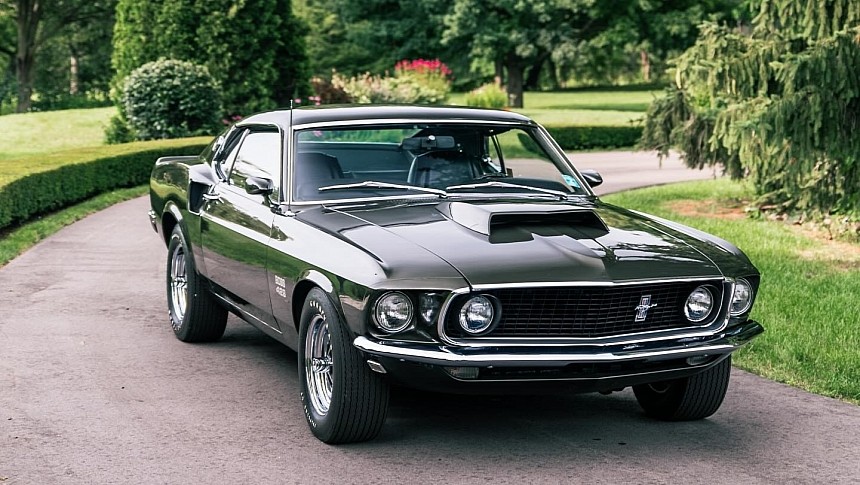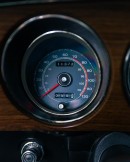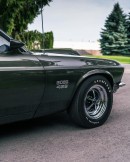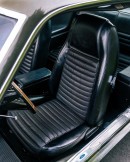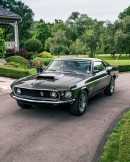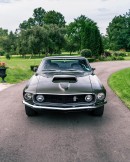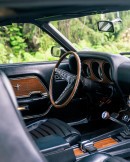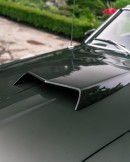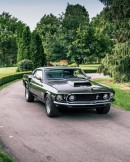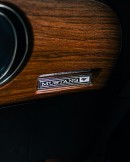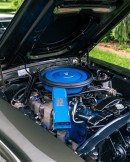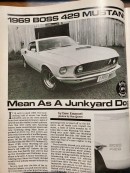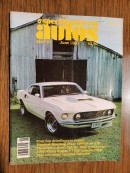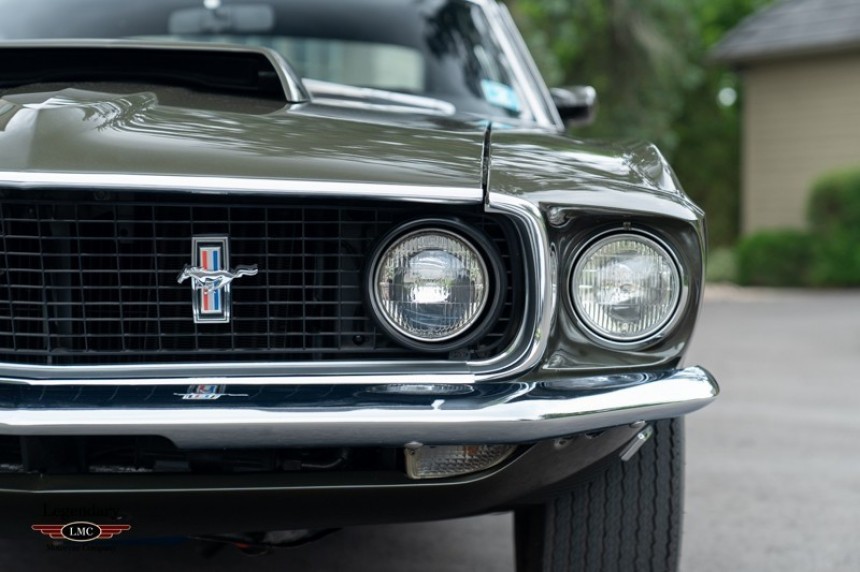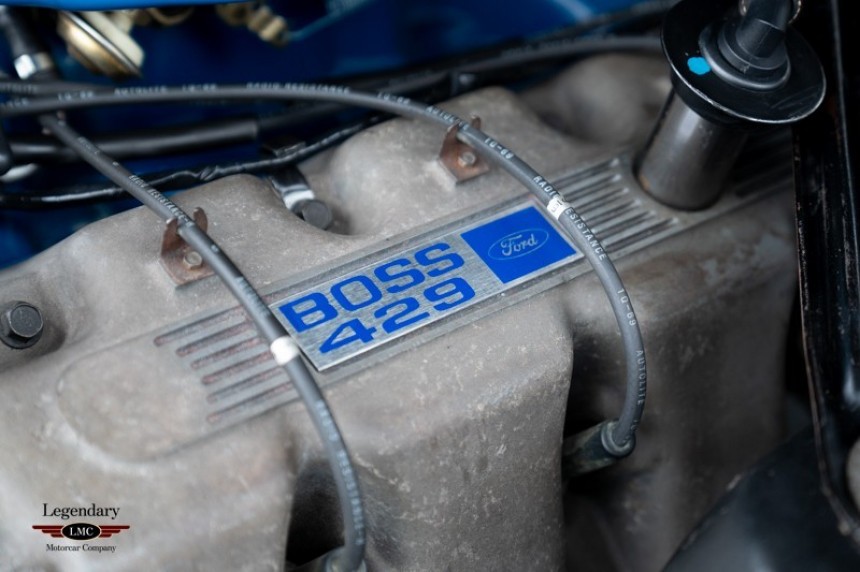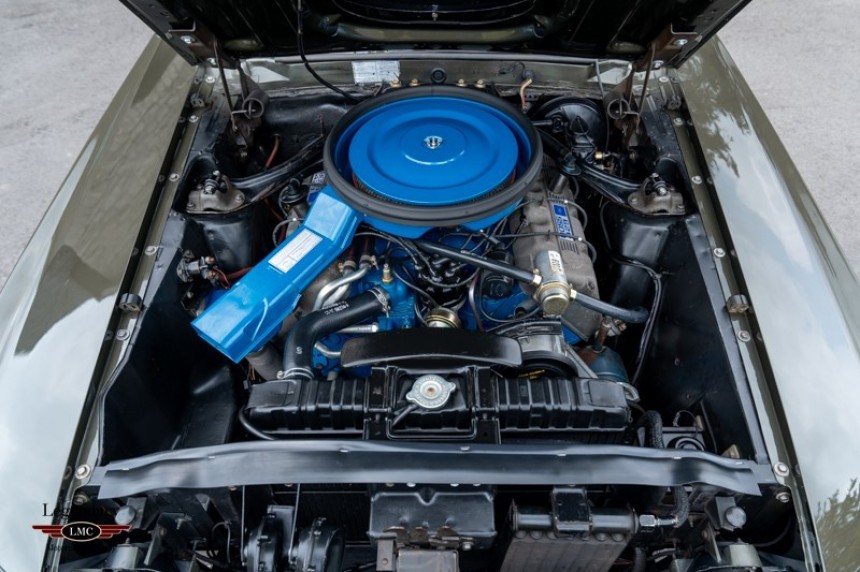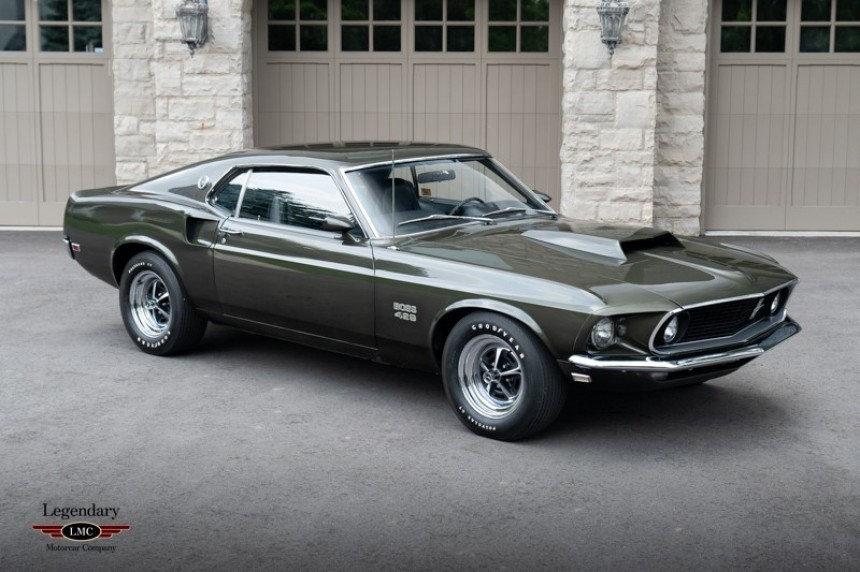Here’s an unpopular opinion that might get me digitally-lapidated faster than the most notorious Ford Mustang of them all could stick its speedo needle between the 6 and 0 on the go-fast dial: the 1969 Boss 426 was – and still is – a handful, a headache, a pain in the wallet, and an emotional roller coaster to drive. Precisely why they’re devastatingly appealing – up to the point that certain FoMoCo loyalists would consider an original survivor the ultimate bucket-list-topping wish.
The Mustang Boss 429 – affectionately referred to as the Boss 9 in die-hard fan clubs – was Ford’s perfect vehicle for homologating a race engine to slay Mopars in NASCAR. The elephant in the room was the 429 cubic-inch mastodont shoehorned into the company’s most beloved son, the five-year-old pony, so Blue Oval could say, ‘Here we go, it’s on the streets. Can you race it now?’
And race it they did – in Fairlanes. The Ford Mustang Boss 429 was a brand ambassador, a catwalk supermodel, and a bureaucratic instrument to serve a higher purpose. It was kept in reserve and never sent to the frontline to take on the HEMIs. Ford built a small number of big-block Bosses for just two years, 1069 and 1970—857 in the first year and 500 at the debut of the seventies.
So it’s understandable that finding one doesn’t just happen out of the Blue (Oval), and bumping into one that meandered through 54 years of history without a scratch is almost a religion-converting miracle. With the small production figures, the rowdiest first-generation Mustang might just as well grow wings and a horn on its forehead and eat rainbow dew – because it’s that unicornian.
Ford didn’t even have the mass-production tooling necessary to assemble the battleship seven-liter V8 into the small frame of the Mustang. The company turned its attention to the covert-ops gang from Kar Kraft Engineering in Brighton, Michigan.
The fitment of the 429 was such a production headache that Ford farmed the heavy work out to Kar Kraft Engineering in Brighton, Michigan. For the bulky powerplant to be accommodated, pushing the shock towers further backward in the engine compartment was necessary. Even still, it's a tight squeeze – so crammed that the battery was dropped in the trunk.
The big V8 was a $1,208 option for the Boss 9, taking the total price well above $5,000 – that was Corvette money. It’s been repeteadly alluded that Ford was in the red with every Boss 429 it made, between the engine cost and its unique installation.
The engine is both the car’s aura and its Achilles’ heel – sort of. To be able to actually put it in a street car that could be driven fairly regularly on public roads, Ford wrench turners modified the race variant of the 429-cubic-inch V8. The compression dropped from 12.5:1 to 10.5:1, a mild hydraulic-lifter camshaft was fitted, and intake valves were skinned down. A Holley four-barrel carburetor rated at 735 cubic feet per minute fed the mighty but finicky engine.
The ‘semi-hemi’ heads (the famous Blue Crescent) were sealed to the block with rubber O-rings for each passage to stay true to the powerplant’s race allegiance. The cross-drilled forged-steel crankshaft turned in a four-bolt main block, and the first 279 units used (identified by their ‘S’ letter code) used the NASCAR connecting rods with .50-caliber rod bolts.
Many warranty claims were filed against the early-production Boss 9s, reportedly due to faulty short-block assembly. Ford switched to a T-code version with lighter bottom-end parts for the remainder of the 1969 model year to calm the spirits. In 1970, a new A-code engine (with upgraded smog equipment and solid-lifter valvetrain) dropped between the front fenders of the last batch of 500 Mustang Boss 429s.
The S-code engines are said to be slightly more powerful than the rest of the big-block Bosses, but Ford rated all of them at 375 gross hp and 450 lb-ft (380 PS, 610 Nm). To say that the numbers are shamefully discrediting would be the understatement of the century – but there’s a bit of truth lurking underneath all the NASCAR-glamoured powertrain.
Tested in June 1983 by Special Interest Autos (SIA) magazine, the Ford Mustang Boss 429 proved a rather disappointing fallen angel. Even some hot-headed past owners were biased about their go-fast ponies, stating that the cars were a little sluggish at first. However, once the RPM breached the 3,000 mark, the Mustang became an iron horse.
When out on the road and cranking through the gears, it was like a train – no way of stopping it. The SIA testers from four decades ago described the car as a paradox. ‘A rapid car after the engine has made its initial ascent up the rpm scale, at low speeds performance is sluggish.’ Although the eight-cylinder NASCAR-spawned engine packed a hard punch, it also came with loads of extra weight over the front end.
The suspension – otherwise well-suited for good handling – simply couldn’t take the punishment, and the car leaned on corners as if riding on three wheels, with the nose-diving like a kamikaze fighter plane. An overkill of body roll and understeer quickly followed, rendering the Boss 429 a straight-line wonder, observing the high-RPM power band note.
The journalists suspected the problem came from too mild of a cam timing for the oversized intake ports, and that made for poor part-throttle response at low speeds. But as revs build up, the engine releases the Hulk from the shy and unimpressive Bruce Banner persona. The reporters had this to say, ‘Mean as a junkyard dog’ about the Boss 9’s road manners – if you weren’t careful, it would bite hard and fast.
Ford Motor Company began Boss 429 production on January 17, 1969, and by March 7, one Black Jade example was rolling off the line (the one in the gallery). On April 4 that year, the car was sold to its first owner for $5,229.58. The new Boss had the standard 3.91 Trac-Lok rear axle (the 4.30 Detroit Locker was optional), a console, power front disc brakes, an AM radio, deluxe belts, power steering, competition suspension, functional front air spoiler, and color-keyed mirrors.
After spending 44 years with the initial purchaser, retaining all of its originality, from the drivetrain to the paint, a dealership bought the car, which is once again available for the next owner. The price, however, is a ‘call for details’ deal, but expect six figures for this 11,372-mile (18,297 km) survivor. For comparison, note that the last S-Code – also an all-original dark green assembled in 1969 was sold in 2020 for $335,000, with 14,386 miles on the clock (23.147 km).
And race it they did – in Fairlanes. The Ford Mustang Boss 429 was a brand ambassador, a catwalk supermodel, and a bureaucratic instrument to serve a higher purpose. It was kept in reserve and never sent to the frontline to take on the HEMIs. Ford built a small number of big-block Bosses for just two years, 1069 and 1970—857 in the first year and 500 at the debut of the seventies.
So it’s understandable that finding one doesn’t just happen out of the Blue (Oval), and bumping into one that meandered through 54 years of history without a scratch is almost a religion-converting miracle. With the small production figures, the rowdiest first-generation Mustang might just as well grow wings and a horn on its forehead and eat rainbow dew – because it’s that unicornian.
The fitment of the 429 was such a production headache that Ford farmed the heavy work out to Kar Kraft Engineering in Brighton, Michigan. For the bulky powerplant to be accommodated, pushing the shock towers further backward in the engine compartment was necessary. Even still, it's a tight squeeze – so crammed that the battery was dropped in the trunk.
The big V8 was a $1,208 option for the Boss 9, taking the total price well above $5,000 – that was Corvette money. It’s been repeteadly alluded that Ford was in the red with every Boss 429 it made, between the engine cost and its unique installation.
The ‘semi-hemi’ heads (the famous Blue Crescent) were sealed to the block with rubber O-rings for each passage to stay true to the powerplant’s race allegiance. The cross-drilled forged-steel crankshaft turned in a four-bolt main block, and the first 279 units used (identified by their ‘S’ letter code) used the NASCAR connecting rods with .50-caliber rod bolts.
Many warranty claims were filed against the early-production Boss 9s, reportedly due to faulty short-block assembly. Ford switched to a T-code version with lighter bottom-end parts for the remainder of the 1969 model year to calm the spirits. In 1970, a new A-code engine (with upgraded smog equipment and solid-lifter valvetrain) dropped between the front fenders of the last batch of 500 Mustang Boss 429s.
Tested in June 1983 by Special Interest Autos (SIA) magazine, the Ford Mustang Boss 429 proved a rather disappointing fallen angel. Even some hot-headed past owners were biased about their go-fast ponies, stating that the cars were a little sluggish at first. However, once the RPM breached the 3,000 mark, the Mustang became an iron horse.
When out on the road and cranking through the gears, it was like a train – no way of stopping it. The SIA testers from four decades ago described the car as a paradox. ‘A rapid car after the engine has made its initial ascent up the rpm scale, at low speeds performance is sluggish.’ Although the eight-cylinder NASCAR-spawned engine packed a hard punch, it also came with loads of extra weight over the front end.
The journalists suspected the problem came from too mild of a cam timing for the oversized intake ports, and that made for poor part-throttle response at low speeds. But as revs build up, the engine releases the Hulk from the shy and unimpressive Bruce Banner persona. The reporters had this to say, ‘Mean as a junkyard dog’ about the Boss 9’s road manners – if you weren’t careful, it would bite hard and fast.
Ford Motor Company began Boss 429 production on January 17, 1969, and by March 7, one Black Jade example was rolling off the line (the one in the gallery). On April 4 that year, the car was sold to its first owner for $5,229.58. The new Boss had the standard 3.91 Trac-Lok rear axle (the 4.30 Detroit Locker was optional), a console, power front disc brakes, an AM radio, deluxe belts, power steering, competition suspension, functional front air spoiler, and color-keyed mirrors.
After spending 44 years with the initial purchaser, retaining all of its originality, from the drivetrain to the paint, a dealership bought the car, which is once again available for the next owner. The price, however, is a ‘call for details’ deal, but expect six figures for this 11,372-mile (18,297 km) survivor. For comparison, note that the last S-Code – also an all-original dark green assembled in 1969 was sold in 2020 for $335,000, with 14,386 miles on the clock (23.147 km).
